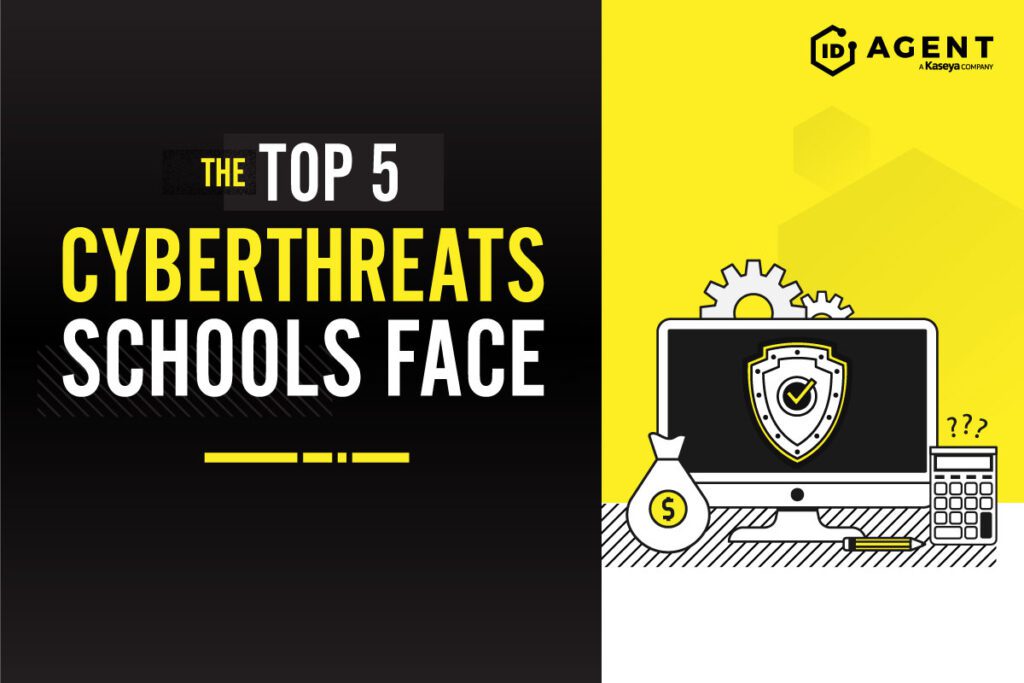4 Ways Cybercriminals Can Disrupt Our Daily Lives

In our increasingly digital world, the threat of cybercrime looms large over every aspect of our daily lives. No longer confined to the shadowy corners of the internet, cybercriminals have expanded their reach, targeting critical infrastructures and essential services that we rely on daily. The consequences of these attacks can be far-reaching, affecting everything from the education of our children to the basic utilities we depend on. These examples of four significant ways cybercriminals can disrupt our daily lives are chilling. By understanding these threats, we can better appreciate the importance of robust cybersecurity measures and the need for vigilance in protecting our digital landscapes.
Excerpted in part from The Midyear Cyber-Risk Report 2024 DOWNLOAD IT>>
1. Business service provider attacks that rock entire sectors
Victim: Change Healthcare
First Reported: The Week in Breach News: 02/21/24 – 02/27/24
Exploit: Hacking
Our initial report: Change Healthcare is admitting that it experienced a successful cyberattack that caused widespread disruption to healthcare services and prescription processing across the U.S. The healthcare technology company is part of Optum and is owned by UnitedHealth Group. The trouble began on February 21, when bad actors were able to exploit the ConnectWise vulnerability. More than 100 Change Healthcare applications across pharmacy, medical record, clinical, dental, patient engagement and payment services were affected. Some reports are pointing to a state-sponsored threat actor as the culprit.
The aftermath: So far, this is the cyberattack story of 2024, with an impact that will reverberate for years. UnitedHealth, the parent company of Change Healthcare, expects this attack to cost them $1.6 billion. That amount does not include the ransom that UnitedHealth paid, estimated to be $22 million. UnitedHealth reported $872 million in unfavorable effects from this attack in its Q1 earnings report. Cyberattack impacts in that quarter resolved at $0.74 per share, with the company estimating full-year impacts of $1.15 to $1.35 per share.
UnitedHealth said they provided an estimated $6 billion in advance funding and interest-free loans to impacted care providers. However, this was still a devastating blow for some medical centers and physicians’ offices. According to an American Medical Association (AMA) survey of the practices and clinics impacted by this cyberattack, the incident had a cascade of damaging effects on medical offices. The AMA reported that 31% of their survey respondents were unable to make payroll, 55% of respondents had to use personal funds to cover practice expenses and 44% were unable to purchase supplies.
2. Ransomware that disrupts public services
Victim: The City of Hamilton, Canada
First reported: The Week in Breach News: 03/06/24 – 03/12/24
Exploit: Ransomware
Initial report: The City of Hamilton, Canada, a municipality located about 40 miles away from Toronto, experienced a ransomware attack that impacted city systems and services. The attack was discovered on February 25. Critical infrastructure, including water and wastewater treatment, waste collection and transit are operational but many other city services are not. Citizens must pay taxes, tickets or fines in person. Most public agencies are without phone service and libraries are unable to offer Wi-Fi. All city council meetings before March 15 have been canceled. No ransomware gang has claimed responsibility for the attack.
The aftermath: Officials said that about 60% of the municipality’s roughly 700 servers were encrypted. Systems used for online payments were knocked out, forcing the city to turn to cash transactions and other manual methods. Any tax payments, tickets or fines have to be paid in person. City workers did not receive pay stubs or pay reports, with some pay running two weeks late. As of April 16, 2024, many city government departments were still limping along, with no phones or access to systems and data, including accounts payable, building and planning, housing cemeteries, engineering services, forestry horticulture, job postings and recruitment, licensing and online city services.
3. Destructive attacks on manufacturers
Victim: Varta AG
First reported: The Week in Breach News: 02/14/24 – 02/20/24
Exploit: Hacking
Varta AG: Battery manufacturer
Initial report: Varta AG announced that it was hit by a cyberattack that forced it to shut down IT systems and stop production at its plants. Varta AG said that its administration and five of its production units were taken down by hackers. The company did not provide a timeline for the restoration of its operations. The resultant production stoppage has caused a slide in Varta AG’s stock price. Varta AG is a major battery supplier to automotive companies and countries throughout the EU.
The aftermath: Production was halted for at least two weeks, leading to a cascade of bad news. However, the company’s production lines were moving as expected about a month after the attack. While Varta AG was already under a restructuring plan, the company cited the cyberattack as a major contributor to the fiscal woes that resulted in it being unable to meet its targets under the plan. Shares fell by 30% after the April 12, 2024 announcement.

See why choosing a smarter SOC is a smart business decision. DOWNLOAD AN EBOOK>>
4. Ransomware assaults in the education sector disrupt learning
Victim: Scranton School District (Pennsylvania)
First reported: The Week in Breach News: 03/13/24 – 03/19/24
Exploit: Ransomware
Initial report: Schools in Pennsylvania’s Scranton School District were impacted by a cyberattack last week. The district said on social media that it is experiencing widespread technology outages because of the attack. Students in many areas have been unable to connect to school networks and forced to resort to old-fashioned paper and pencil. School officials also noted that some files are unavailable. The district is investigating the incident with a third-party forensics firm.
The aftermath: On the day the attack initially hit, schools in the district were delayed in opening. Subsequently, schools opened but technology problems continued to interrupt and hamper school operations. Faculty and staff were left with no access to student records, email or phone systems. In the classroom, teachers and students were forced to resort to old-fashioned paper and pencil learning after the attack left them unable to use computers. These delays continued for over a week, with school district officials unable to offer a timeline on when the full functionality of the school’s technology would be restored.

Learn about the top cyber threats K-12 schools face and how to mitigate them. DOWNLOAD INFOGRAPHIC>>
Kaseya’s Security Suite helps businesses mitigate all types of cyber-risk affordably
Kaseya’s Security Suite has the tools that MSPs and IT professionals need to mitigate cyber-risk effectively and affordably with automations and AI-driven features that make IT professionals’ lives easier.
BullPhish ID: This effective, automated security awareness training and phishing simulation solution provides critical training that improves compliance, prevents employee mistakes and reduces a company’s risk of being hit by a cyberattack.
Dark Web ID: Our award-winning dark web monitoring solution is the channel leader for good reason. It provides the greatest amount of protection around with 24/7/365 human and machine-powered monitoring of business and personal credentials, including domains, IP addresses and email addresses.
Graphus – Graphus is a cutting-edge, automated antiphishing solution that puts three layers of AI-powered protection between employees and phishing messages. It supercharges your Microsoft 365 and Google Workspace email security to catch threats conventional security might miss including Zero Days and AI-enhanced malicious messages.
RocketCyber Managed SOC – Our managed detection and response (MDR) solution is backed by a world-class security operations center that detects malicious and suspicious activity across three critical attack vectors: endpoint, network and cloud.
Datto EDR: Detect and respond to advanced threats with built-in continuous endpoint monitoring and behavioral analysis to deliver comprehensive endpoint defense (something that many cyber insurance companies require).
Datto AV: Safeguard businesses effortlessly against sophisticated cyber threats including Zero Days and ransomware with AI-driven, next-generation antivirus protection that is over 99% effective, far surpassing the industry average.
Vonahi Penetration Testing: How sturdy are your cyber defenses? Do you have dangerous vulnerabilities? Find out with vPenTest, a SaaS platform that makes getting the best network penetration test easy and affordable for internal IT teams.
See how our Security Suite can be put to work for you with a personalized demo.
- Book a demo of BullPhish ID, Dark Web ID, RocketCyber Managed SOC and Graphus. BOOK IT>>
- Book a demo of vPenTest BOOK IT>>
- Book a demo of Datto AV and Datto EDR BOOK IT>>